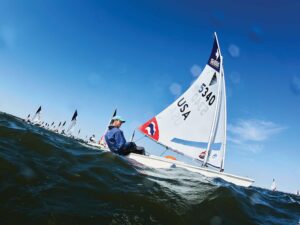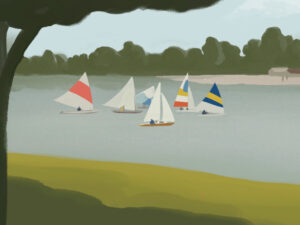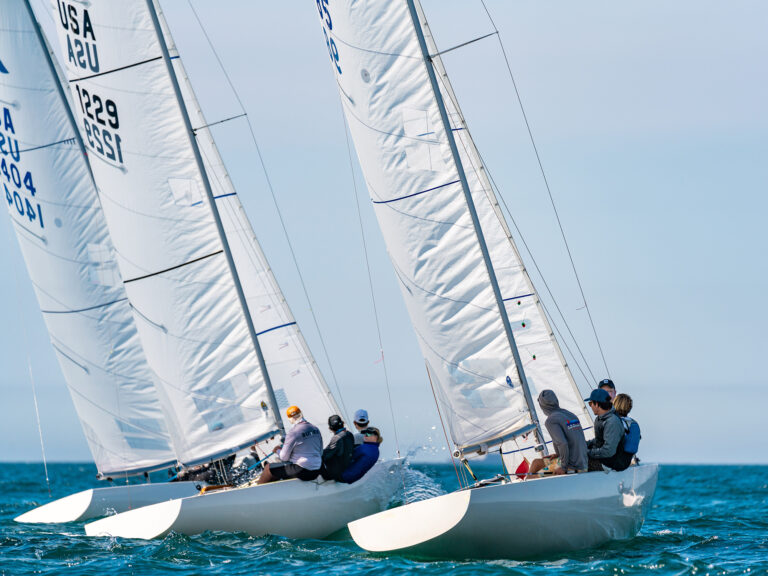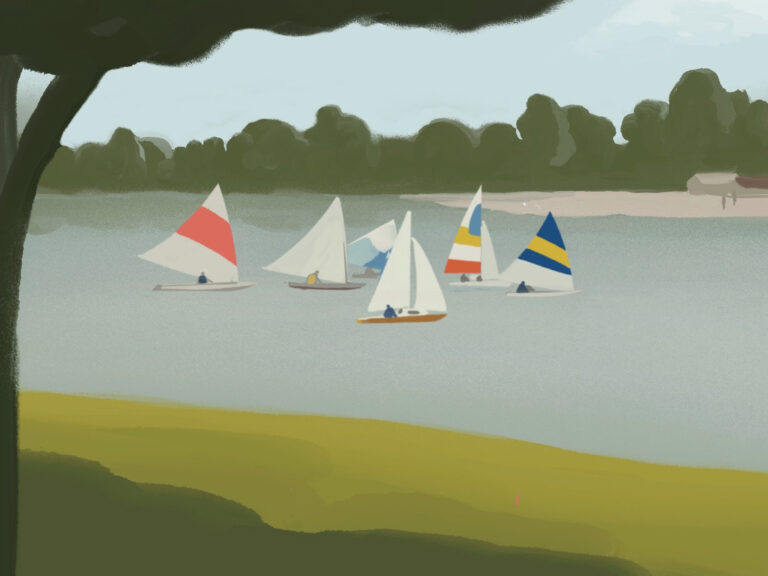NEISA’s very own “it” girl, Deirdre Lambert has snagged yet another Quantum Women’s College Sailor of the Year award. With the teams base camp frozen over nearly the entire season, it is truly a wonder how Lambert maintained focus and determination during the 2014 Spring season at Dartmouth. Her tip? Keep it competitive.
How does it feel to be named Quantum Women’s College Sailor of the Year twice in a row?
DL: I am extremely honored to receive the Quantum Women’s Sailor of the year award again, especially being a finalist alongside Morgan Kiss and Erika Reineke – both very talented sailors. This year, I was focused more on helping the team do the best we could than winning the award again, but it is a great honor and a success for the entire team.
You crushed A division with crew Avery (Plough) by 41 points. 8 out of 17 races were bullets, what was the mindset in the boat? Obviously it was working for you!
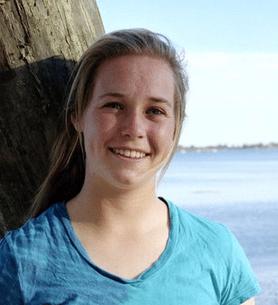
Deirdre Lambert, Dartmouth College
DL: We just tried to take it one race at a time and do the best we could in each race. We focused a lot on starting well and controlling the boat to windward so we could have options off the line, and making little consolidations so that we could win the side we were on. John (our coach) tells us not to worry about results and just focus on doing the little things right, so we tried to do that and not make any huge mistakes that we couldn’t recover from.
What was your main focus going into each practice this season?
DL: During the beginning of the season, I and my crew at that point (Nate Greason ’17) were in team race mode and trying to improve our boat handling and play execution. After the team race season ended for us, Avery and I mostly focused on getting used to sailing with each other and also working on starts so that we could control our own race.
Did you feel you had the upper hand, being able to practice in the Z420s (since you were able to sail them in the first regatta they were ever sailed in)?
DL: Yes, I definitely felt very comfortable in the Z420s and it helps that we sail them a bunch in practice. We felt very fast in them at nationals and I think part of that was definitely familiarity with the boats. Additionally, Avery and I had worked out some of the things that other teams might have had trouble with – such as adjusting the vang on a wing, because it is led back to where the skipper sits.
What changed about your training regimen this season?
DL: Nothing in particular changed for this season. Mascoma Lake was frozen for a long time (until the week after coed New England’s) so we traveled to Harvard and MIT a lot to practice. Because of all the travel practices, the whole team really tried to make the most of our practices on the lake in May, and we had great breeze for the most part. We have really competitive practices so the whole team pushing each other definitely makes everyone better.
What was the transition to a new crew this spring like?
DL: My crew for the past two and a half years, Carissa Crawford ’14, was injured this spring so she couldn’t sail at all. For women’s regattas, I sailed with Avery, and the transition was really not that hard because she is an awesome crew and great at adapting to different skippers. Also thanks to Matt Wefer ’14, who Avery normally sails with, for letting me sail with her for a couple regattas!
How did all of the coed racing exposure help you?
DL: Coed racing this fall and spring definitely helped me by allowing me to practice and race in a more competitive environment. It really helped with starts and the importance of having a start that allows you to sail your own race that is not dictated by other boats. Team racing, especially, gave us confidence in our boat handling and our ability to navigate the tight spots of the racecourse.
Would you say there is a significant difference in the racing styles of coeds and women’s sailing?
DL: Coed racing, in my experience, is a lot more compact than women’s because everyone is so talented. Small mistakes cost you many more places in coeds than in women’s, and it is also harder to use speed to gain back boats. Additionally, the coed starting line is very competitive and people tend to set up earlier.
What goals could you possibly have for next year with three years of incredible accomplishments already under your belt?
DL: I’m approaching next year with the same mindset I did this year – just try to get better and enjoy the sport. I’ve really enjoyed team racing for the past two springs and while we definitely improved this year, we have a lot more work to do. We finished one spot away from qualifying for Nationals at TR New England’s, so hopefully next year we can improve enough to qualify.


